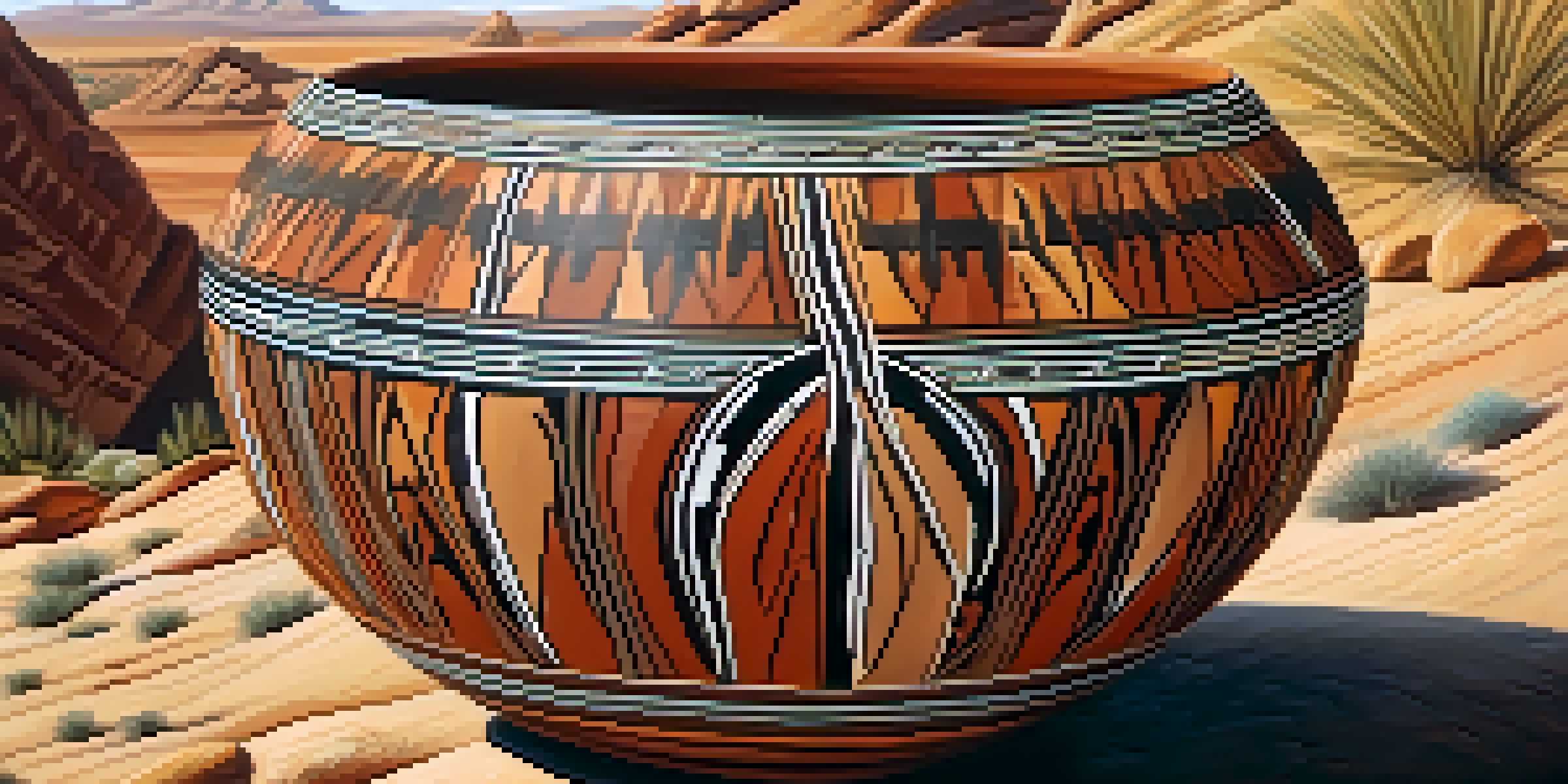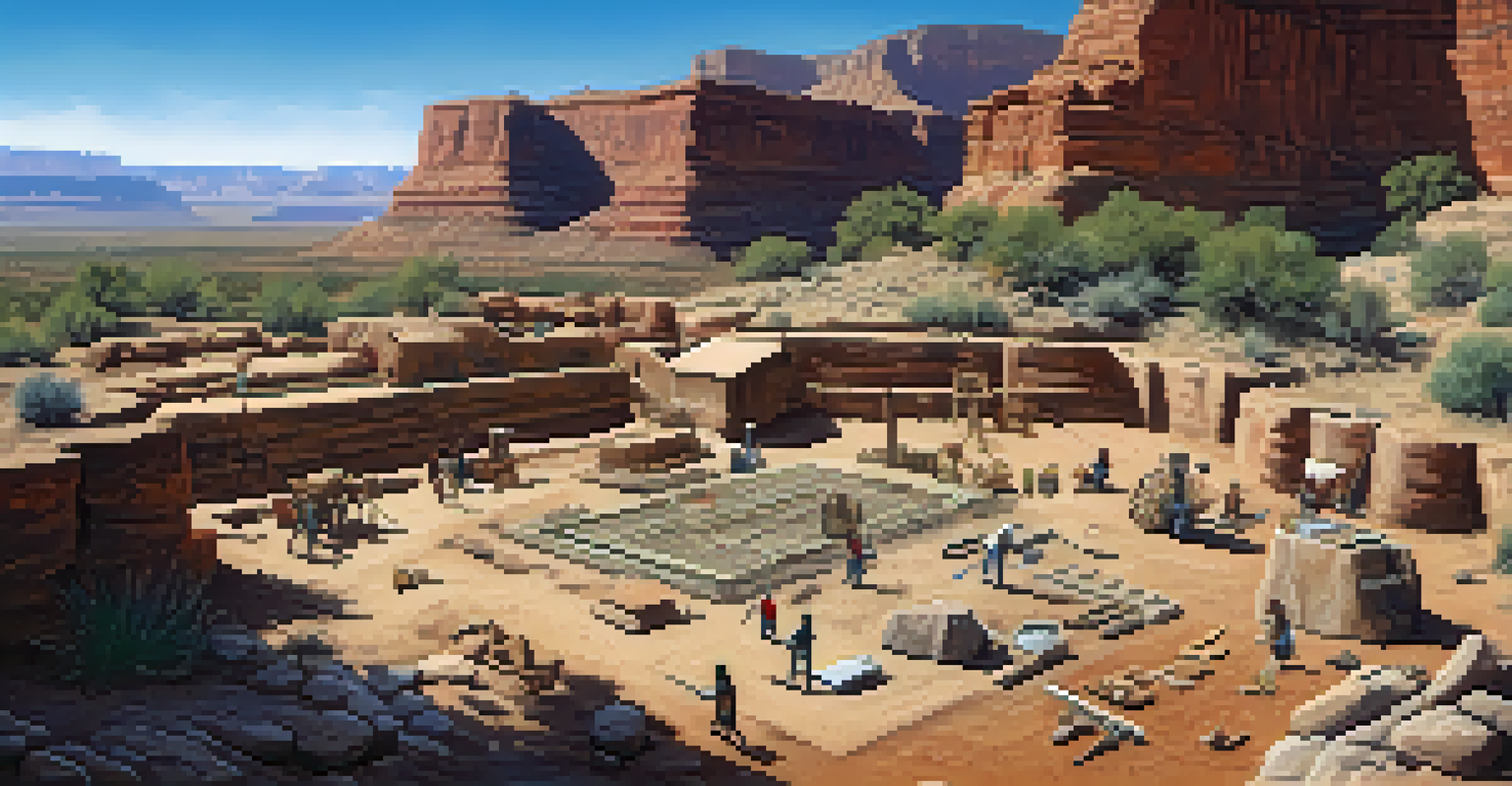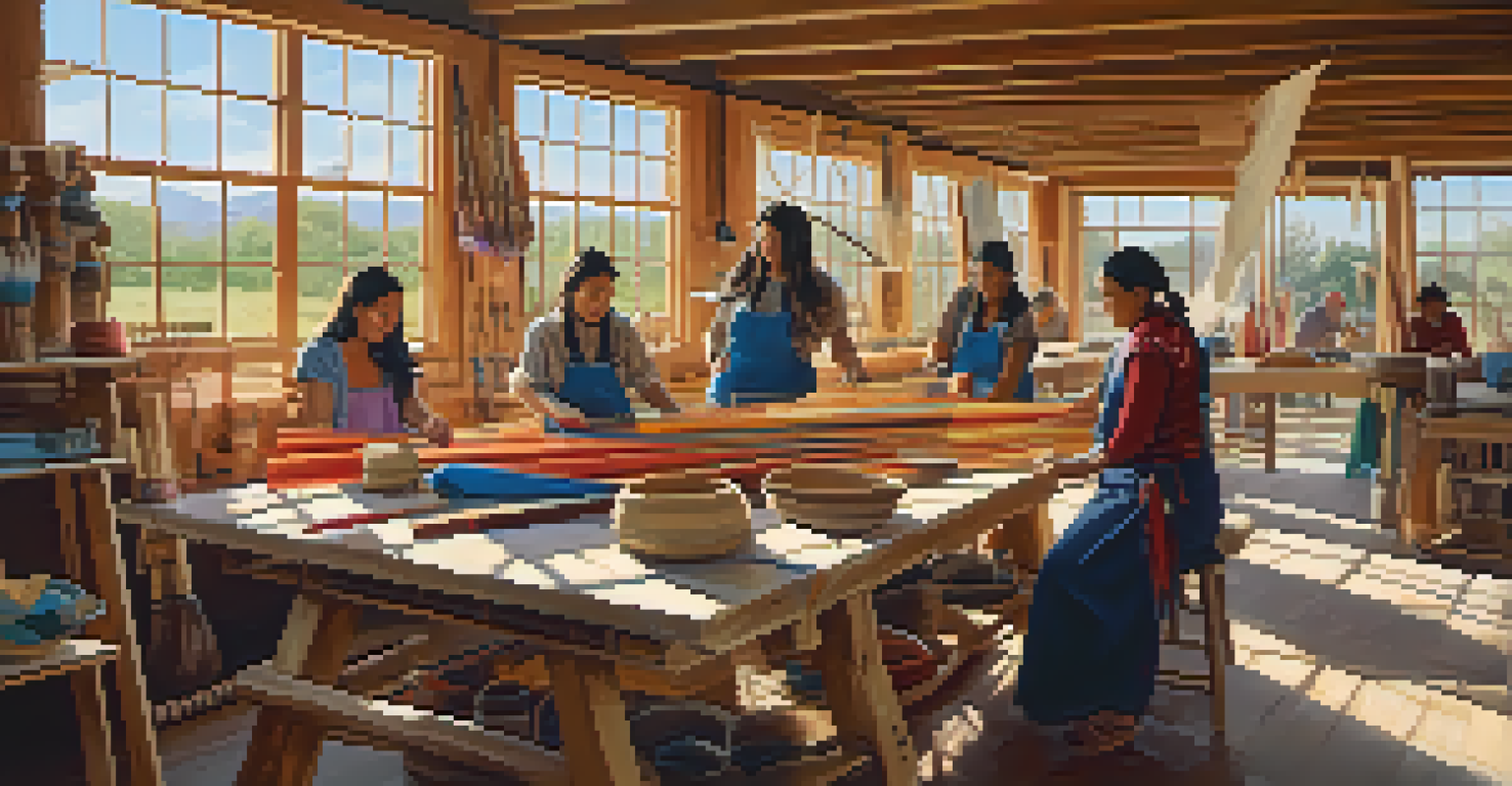The Significance of Native American Artifacts in Arizona

Understanding Native American Artifacts in Arizona
Native American artifacts in Arizona are tangible links to the rich history and culture of indigenous peoples. These items, ranging from pottery to tools, represent the daily lives and traditions of various tribes that have inhabited the region for centuries. By studying these artifacts, we gain insights into the customs, beliefs, and skills of Native Americans, helping to preserve their legacy.
Artifacts are the fingerprints of the past; they tell us who we are and where we came from.
Arizona is home to numerous archaeological sites, such as the Grand Canyon and the Hopi mesas, where artifacts are often discovered. Each find contributes to the broader narrative of Native American history, offering a glimpse into their interactions with the land and each other. For instance, pottery shards can reveal information about trade routes and social structures.
The importance of these artifacts goes beyond mere history; they also foster a sense of identity and pride among Native American communities today. By acknowledging and respecting these items, we honor the stories and cultures they represent, bridging the past with the present.
Cultural Significance of Artifacts to Native Tribes
For Native American tribes, artifacts are not just remnants of the past; they embody cultural significance and spirituality. Many artifacts are considered sacred and are deeply tied to tribal identity, rituals, and traditions. For example, ceremonial items may play crucial roles in community gatherings and spiritual practices, highlighting their importance beyond historical context.

Exploring the cultural significance of these artifacts helps us understand the values and beliefs of Native American tribes. For instance, certain designs and symbols used in pottery or textiles can convey specific stories or teachings. By appreciating these meanings, we can foster greater respect and awareness of Native American cultures.
Cultural Significance of Artifacts
Native American artifacts embody cultural identity and spirituality, serving as vital links to the traditions and beliefs of indigenous tribes.
Moreover, the preservation of artifacts is essential for future generations. By passing down the knowledge of these items, tribes ensure their traditions continue to thrive. This connection to the past strengthens community bonds and reinforces their cultural heritage.
Archaeological Efforts in Arizona
Arizona's unique landscape provides a rich ground for archaeological research, leading to the discovery of countless artifacts. Organizations and universities actively engage in excavations and studies to uncover the history hidden beneath the surface. These efforts not only reveal artifacts but also contribute to our understanding of how Native American societies evolved over time.
The preservation of our cultural heritage is not merely a responsibility but a sacred duty.
Archaeologists often employ advanced techniques, like carbon dating and analysis, to determine the age and context of findings. Such methods help establish timelines of human activity in the region, showcasing how Native Americans adapted to environmental changes. For example, understanding the shift from nomadic to agricultural lifestyles sheds light on the development of complex societies.
Collaboration with Native American tribes is crucial in these archaeological endeavors. By working together, archaeologists can ensure that findings are interpreted respectfully and in alignment with tribal beliefs. This partnership enriches the research process and helps preserve the cultural significance of artifacts.
Preservation and Protection of Artifacts
The preservation of Native American artifacts is vital for maintaining cultural heritage. Many artifacts are at risk due to environmental factors, vandalism, and illegal looting. Organizations dedicated to artifact preservation work tirelessly to protect these important pieces of history, ensuring they remain intact for future generations to study and appreciate.
Museums and cultural centers play an essential role in artifact preservation. They not only house collections but also educate the public about the significance of these items. Through exhibitions and programs, museums foster a deeper understanding of Native American cultures, helping to combat stereotypes and promote appreciation.
Importance of Preservation Efforts
Preserving Native American artifacts is essential for maintaining cultural heritage and protecting these important pieces of history from threats like vandalism and looting.
Moreover, the involvement of Native American tribes in preservation efforts is crucial. Many tribes advocate for the return of artifacts to their rightful places, recognizing the importance of context in understanding their cultural significance. This movement emphasizes the need for ethical stewardship of artifacts and respects the wishes of indigenous communities.
The Role of Artifacts in Education
Artifacts serve as powerful educational tools, bridging gaps between past and present. Schools and educational institutions often incorporate artifact studies into their curricula, providing students with hands-on learning experiences. By examining artifacts, students can engage with history in a tangible way, fostering a deeper connection to Native American cultures.
Workshops and community programs focused on artifacts encourage discussions about cultural heritage and history. These initiatives allow participants to explore the significance of artifacts while promoting respect for diverse cultures. For instance, creating replicas of traditional tools or pottery can help individuals appreciate the craftsmanship and skills involved.
Furthermore, educational programs that involve Native American speakers or tribal members enrich the learning experience. Hearing firsthand accounts and stories brings artifacts to life, making history feel more relevant and relatable. This approach not only educates but also inspires a sense of responsibility to preserve cultural heritage.
Modern Interpretations of Artifacts
In today's world, Native American artifacts are often reinterpreted through contemporary art and design. Many Native artists draw inspiration from traditional techniques and motifs, creating pieces that resonate with modern audiences. This fusion of past and present not only showcases the creativity of Native artists but also revitalizes cultural expressions.
Modern interpretations of artifacts can also spark conversations about cultural appropriation and representation. It's essential to navigate these discussions sensitively, ensuring that Native voices are heard and respected. By promoting authentic Native art, we can celebrate the vibrancy of these cultures while acknowledging their histories.
Education Through Artifact Studies
Artifacts are powerful educational tools that foster hands-on learning, helping students and communities connect with Native American cultures and histories.
Moreover, contemporary art exhibits featuring Native American artifacts often challenge stereotypes and misconceptions. They provide a platform for storytelling and education, allowing viewers to engage with the complexities of Native experiences. This ongoing dialogue encourages a deeper understanding of culture and history.
The Future of Native American Artifacts in Arizona
As we look to the future, the significance of Native American artifacts in Arizona remains paramount. Ongoing archaeological research, preservation efforts, and educational initiatives will continue to shape our understanding of these invaluable items. With a collective commitment to honoring and respecting Native American cultures, we can ensure their stories endure.
The involvement of Native American tribes in the discussion surrounding artifacts is crucial. By prioritizing their voices and perspectives, we can foster a more inclusive approach to cultural heritage. This collaborative effort will help bridge the gap between indigenous communities and the wider public, promoting mutual respect and understanding.

Ultimately, the future of Native American artifacts in Arizona hinges on our ability to recognize their importance. By valuing these items not only as historical objects but as living representations of culture, we can create a society that appreciates and honors the rich tapestry of Native American history.